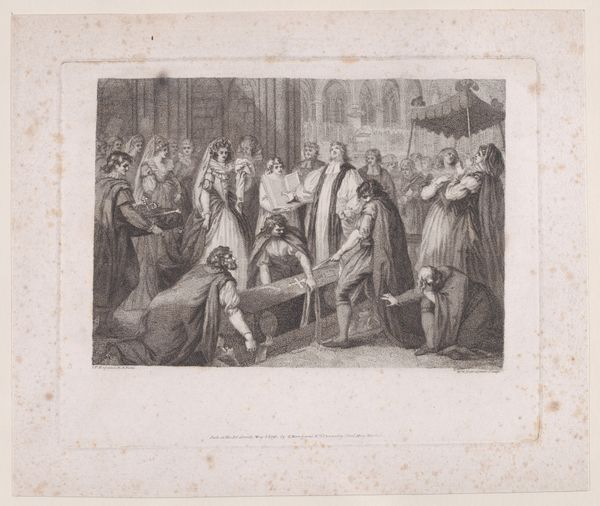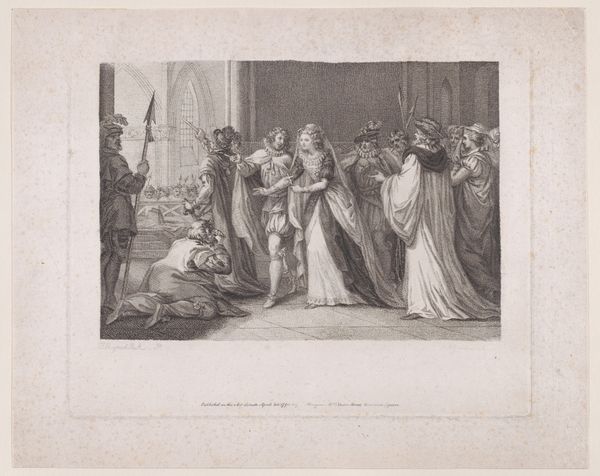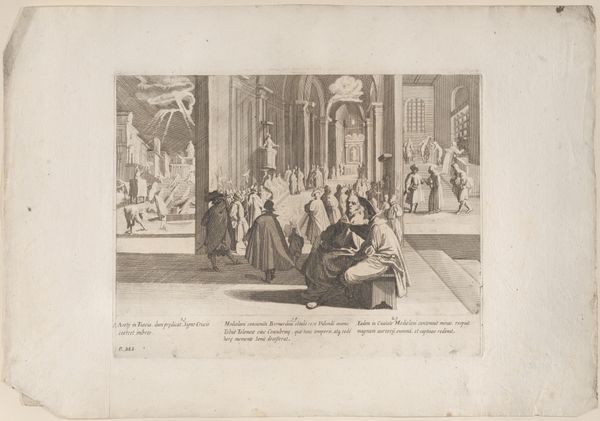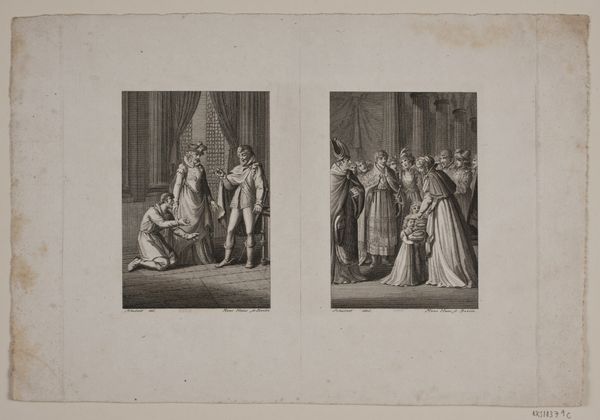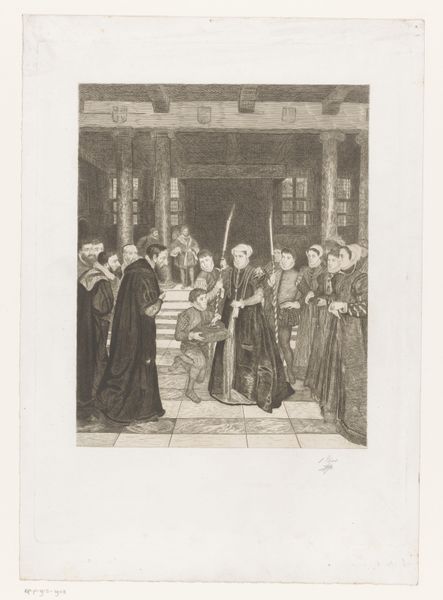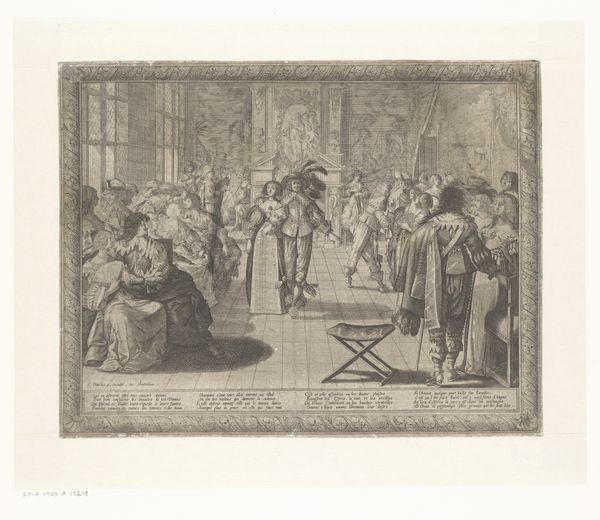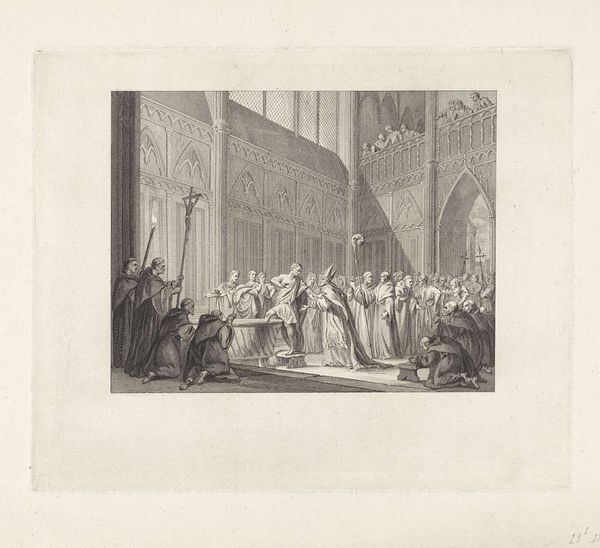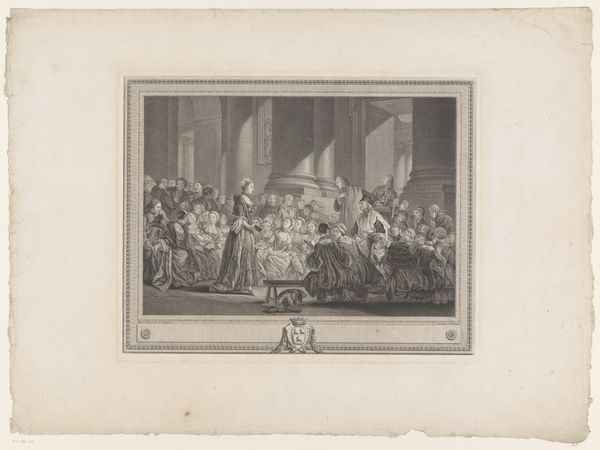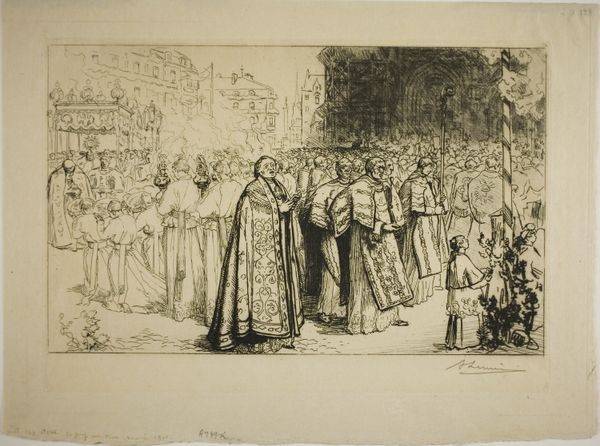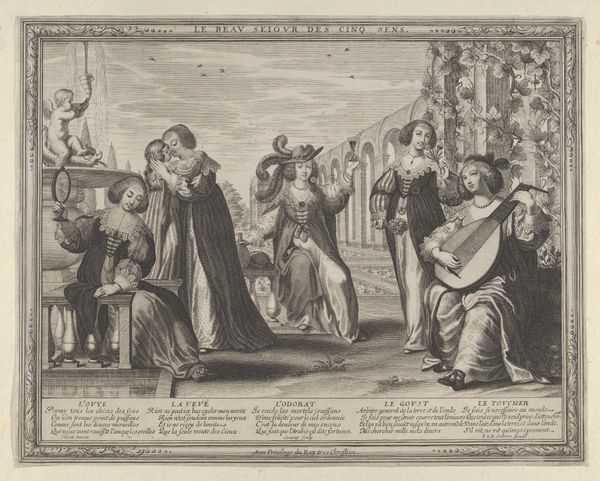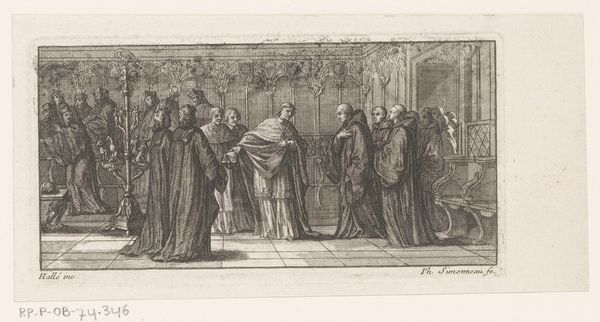
Funeral procession of Mary, Queen of Scots 1791
0:00
0:00
drawing, print, engraving
#
drawing
#
narrative-art
# print
#
history-painting
#
academic-art
#
engraving
Dimensions: Plate: 8 × 9 15/16 in. (20.3 × 25.2 cm) Sheet: 10 5/16 × 12 1/8 in. (26.2 × 30.8 cm)
Copyright: Public Domain
Editor: So, here we have "Funeral Procession of Mary, Queen of Scots," an engraving dating to 1791, by William Nelson Gardiner. The stark black and white really draws your eye to the procession itself. It feels very solemn, almost oppressive. What strikes you when you look at this, from an art historical perspective? Curator: It’s fascinating to consider the economic forces and technologies required to produce this engraving. Think of the labour involved, not only Gardiner's artistic skill, but also the production and distribution of the print itself. Who was the target audience and how does the accessibility of printmaking influence our understanding of historical events? Editor: That's interesting, I hadn't really considered the audience or production side. It just seemed like a historical record. How does focusing on the material side change our perception of the artwork's intent? Curator: The piece ceases to be a mere depiction and starts to signify a certain societal standing as an art object and the artist’s relationship to commercial viability. Do you think that accessibility influences the way this moment in history would be later seen? Editor: It does make you think about how the print medium shapes our understanding of Mary, Queen of Scots. Was it about historical accuracy, or more about popular consumption? Almost like a propaganda image? Curator: Precisely. This work’s meaning changes entirely when considering social and production costs and goals in distributing this piece. Its historical record is as a valuable and consumable product. Editor: It's made me look at prints very differently. I see them as artifacts, but also as commodities that helped shape history. Curator: Indeed, and thinking critically about the tools used and its commercial distribution, enriches and contextualizes any visual information for future reflection.
Comments
No comments
Be the first to comment and join the conversation on the ultimate creative platform.
